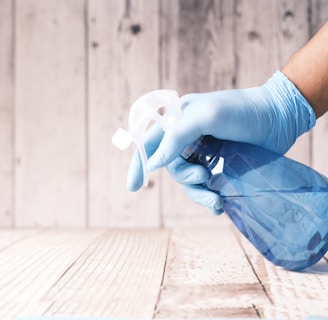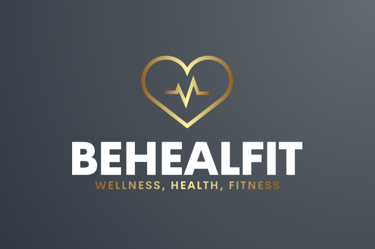The Invisible Danger: Is Your Daily Household Cleaning Destroying Your Health?
Is your daily cleaning harming your health? Discover the hidden dangers of chemicals, their impact on indoor air, and eco-friendly solutions for a healthy home.
HEALTHBLOG-LIST
7/25/20256 min read


In Brief
Every day, we strive to keep our homes clean and inviting. Yet, behind the "clean" scent of common household products sometimes lies an alarming truth: the household cleaning chemicals we use daily can have insidious effects on our health and indoor air quality. Far from aiming to alarm, this article seeks to inform. It explores the invisible dangers associated with our daily cleaning routine, identifies problematic substances, and guides you towards natural and eco-friendly solutions to protect your family and make your home a truly healthy space.
Table of Contents
The Paradox of Cleanliness: Daily Cleaning and Health
The Hidden Chemistry of Your Home: Common Culprits
Is Your Daily Cleaning Harming Your Health? Worrying Signs and Impacts
Respiratory Problems (Asthma, Allergies, Lung Irritation)
Skin Irritations (Eczema, Dermatitis, Dryness)
Headaches, Nausea, and Dizziness
Hormonal Disruption and Effects on the Reproductive System
Eye and Upper Respiratory Tract Risks
Particular Impact on Children and Pets
Long-Term Risks and Potential Carcinogens
Understanding Toxic Ingredients: What to Avoid
The Solution: Towards Healthy, Eco-Friendly Cleaning
Testimonial: My Eco-Friendly Home Revelation
Practical Tips for a Safe Transition
Frequently Asked Questions (FAQ) About Household Products and Health
Conclusion: A Conscious Choice for a Truly Clean and Healthy Home
7 Unexpected Habits That Speed Up Your Aging
1. The Paradox of Cleanliness: Daily Cleaning and Health
Daily cleaning is a deeply ingrained routine in our lives, synonymous with well-being and cleanliness. We aspire to immaculate interiors, often scented by our cleaning products. Yet, this pursuit of cleanliness can, ironically, expose us to health risks. The air inside our homes can be up to 5 times more polluted than outdoor air, and household cleaning chemicals are a major cause.
The goal is not to scare you or prevent you from cleaning, but to provide you with the necessary information to make informed choices. It's about understanding the invisible dangers and adopting practices that protect your environmental health while keeping your home clean.
2. The Hidden Chemistry of Your Home: Common Culprits
Our cupboards are often full of colorful, perfumed bottles: all-purpose cleaners, disinfectants, glass cleaners, laundry detergents, air fresheners. These products contain a multitude of chemical substances, most of which consumers are unaware of their names and potential effects.
Among the most commonly used cleaning products, we find:
Surfactants
Bleaching agents (bleach)
Solvents
Disinfectants (quaternary ammonium compounds)
Synthetic fragrances
Preservatives (parabens, isothiazolinones)
These ingredients can react with each other and with the air, creating volatile compounds (VOCs) that affect indoor air quality and our health.
3. Is Your Daily Cleaning Harming Your Health? Worrying Signs and Impacts
Regular and often unconscious exposure to these household cleaning chemicals can manifest in various symptoms and health risks.
1. Respiratory Problems (Asthma, Allergies, Lung Irritation)
Impact: Studies show a link between frequent use of spray cleaners and an increased risk of asthma and worsening symptoms in individuals already suffering from asthma. Volatile Organic Compounds (VOCs) and bleaching agents can irritate the respiratory tract.
Signs: Chronic cough, wheezing, shortness of breath, more frequent allergy attacks, throat irritation.
Scientific source (example): Study on cleaning products and asthma: [Link to a typical study, e.g., "Domestic use of cleaning sprays and asthma in adults."]
2. Skin Irritations (Eczema, Dermatitis, Dryness)
Impact: Harsh detergents, aggressive surfactants, and synthetic fragrances can dry out the skin, cause redness, itching, or exacerbate conditions like eczema and contact dermatitis.
Signs: Dry skin, redness, itching, rashes, chapped hands after cleaning.
Scientific source (example): Review on skin irritants in household products: [Link to a typical study, e.g., "Skin irritation from household cleaning products."]
3. Headaches, Nausea, and Dizziness
Impact: Fumes from certain products (solvents, synthetic fragrances, ammonia) can irritate the nervous and respiratory systems.
Signs: Frequent headaches, feelings of nausea, dizziness, unusual fatigue after cleaning.
4. Hormonal Disruption and Effects on the Reproductive System
Impact: Some household products contain endocrine disruptors (like phthalates, often present in synthetic fragrances). These substances can mimic or block the body's natural hormones, affecting fertility, thyroid, and other hormonal systems.
Signs: Although the signs are subtle and long-term, they can include hormonal imbalances and reproductive problems.
Scientific source (example): Article on phthalates and reproductive health: [Link to a typical study, e.g., "Phthalates and human reproductive health."]
5. Eye and Upper Respiratory Tract Risks
Impact: Vapors and accidental splashes of highly irritating products (bleach, drain cleaners) can cause chemical burns and serious damage to the eyes and mucous membranes of the nose and throat.
Signs: Eye irritation, excessive tearing, nasal irritation, persistent dry cough after using products.
6. Particular Impact on Children and Pets
Impact: Children are more vulnerable due to their smaller size (closer to the floor where residues accumulate), developing immune systems, faster breathing, and tendency to put hands in their mouths. Pets, due to their small size and licking habits, are also highly exposed.
Signs: Increased allergies, respiratory problems, or abnormal behaviors in young children or pets after cleaning.
7. Long-Term Risks and Potential Carcinogens
Impact: Chronic exposure to certain VOCs (formaldehyde, benzene) or other substances contained in cleaners (like 1,4-dioxane in some detergents) is linked to an increased risk of certain cancers and neurological diseases.
Signs: These are long-term risks, without immediate signs, highlighting the importance of prevention.
Scientific source (example): Report on carcinogens in household products: [Link to a typical study, e.g., "Carcinogenic exposures in household cleaning products."]
4. Understanding Toxic Ingredients: What to Avoid
Learning to decipher labels is a crucial step to protect your health. Be particularly wary of:
Ammonia: Powerful irritant for eyes, nose, and lungs.
Bleach (Sodium Hypochlorite): Highly corrosive, can create toxic gases when mixed with other products (e.g., ammonia).
Phthalates: Often hidden behind the term "fragrance"; endocrine disruptors.
Synthetic fragrances: Can contain hundreds of undisclosed chemicals, allergens, and potential respiratory/hormonal irritants.
Benzalkonium Chloride (BAC): Common disinfectant, irritating to skin and respiratory tract, may contribute to asthma.
Triclosan: Antibacterial agent (often in antibacterial soaps), linked to antibiotic resistance and hormonal disruption.
5. The Solution: Towards Healthy, Eco-Friendly Cleaning
The good news is that you can have a clean and healthy home without compromising your well-being.
Ventilation is Key
Action: Open windows during and after cleaning to renew the air and disperse fumes.
Why it works: It's the simplest and most effective way to reduce the concentration of indoor pollutants.
Embrace Simple Natural Alternatives
Action: White vinegar (disinfectant, descaler, degreaser), Baking soda (mild abrasive, deodorizer), Lemon (cleaner, disinfectant, deodorizer), Black soap (universal degreaser).
Why it works: These products are effective, non-toxic, biodegradable, and economical.
Choose "Green" Products Wisely
Action: If you buy products, look for certified eco-labels (e.g., European Ecolabel, Ecocert) that guarantee strict environmental and health criteria.
Why it works: These labels are a guarantee of trust that attest to the absence of concerning substances.
Easy DIY Cleaning Recipes
All-purpose cleaner: 1/2 cup white vinegar + 1 cup water + 10 drops essential oil (lemon, tea tree, lavender).
Toilet cleaner: Baking soda, then white vinegar.
Window cleaner: White vinegar + water + a few drops of dish soap.
6. Testimonial: My Eco-Friendly Home Revelation
"I used to be a clean freak, but I suffered from chronic headaches and my hands were always irritated. I blamed it on stress. It was when my son developed asthma that I started questioning our household cleaning products. I read about the dangers and decided to take the plunge into eco-friendly cleaning. I replaced all my cleaners with white vinegar, baking soda, and black soap. At first, it was an adjustment, but very quickly, the headaches disappeared, my hands became soft again, and most importantly, my son's asthma significantly improved. My house smells fresh, not chemical, and I know we're breathing healthy air. It's a revelation for our family health!" – Isabelle R.
7. Practical Tips for a Safe Transition
Step-by-Step: Don't throw everything away at once. Replace your products as they run out.
Read Labels: Educate yourself about ingredients to avoid.
Ventilate, Ventilate, Ventilate: The golden rule, even with natural products.
Wear Gloves: Even with natural products, protect your hands.
Never Mix: Especially not bleach with other products (ammonia, vinegar); it can create deadly gases.
Breathe in Serenity: Aromatherapy for Your Well-being
8. Frequently Asked Questions (FAQ) About Household Products and Health
Are "green" or "natural" products truly safe? Most are much better alternatives, but the term "green" is not always regulated. Look for recognized certification labels (Ecolabel, Ecocert) and read the ingredient list. Even natural products can contain allergens (e.g., essential oils).
Is bleach necessary for disinfecting? No. White vinegar or 70% alcohol can effectively disinfect common surfaces. For deeper disinfection, steam cleaners are a chemical-free option.
Are air fresheners dangerous? Yes, most air fresheners (sprays, diffusers, scented candles) release VOCs, phthalates, and allergens that can irritate the respiratory tract and have endocrine-disrupting effects. Prefer ventilating or using pure essential oils in moderate diffusion.
How can I improve the indoor air quality of my home? Ventilate daily, use air-purifying plants, limit chemical cleaning products and air fresheners, maintain your ventilation system well, and reduce humidity to prevent mold.
Are children more sensitive to household chemicals? Yes. Their immune and respiratory systems are developing, their skin is thinner, and they spend more time on the floor and put more things in their mouths, increasing their exposure. That's why transitioning to safer products is crucial for families.
Is wearing a mask while cleaning sufficient? A mask can filter some particles, but it doesn't always protect against gases and VOCs. Adequate ventilation is much more effective. The ideal is to reduce the use of highly volatile products.
9. Conclusion: A Conscious Choice for a Truly Clean and Healthy Home
Your daily cleaning routine should never compromise your well-being. By becoming aware of the invisible dangers of household cleaning chemicals and adopting natural and eco-friendly solutions, you can transform your home into a true sanctuary of health. Every choice counts: from ventilation to using vinegar and baking soda. Make indoor air quality and your family's health a priority. Your home will not only be clean but truly healthy and safe for all its inhabitants.
